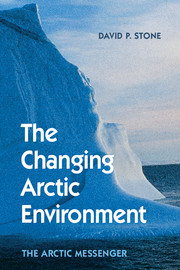Book contents
- Frontmatter
- Dedication
- Contents
- Acknowledgements
- Acronyms
- 1 Personal Beginnings
- PART I THE CHANGING ARCTIC
- PART II WORKING TOGETHER
- PART III WHAT IS THE PRESENT STATE OF KNOWLEDGE?
- PART IV WHAT DOES ALL THIS MEAN?
- Appendix I The Intergovernmental Panel on Climate Change (IPCC)
- Appendix II What Will Happen in the Future If We Do Nothing or If We Try Very Hard to Aggressively Reduce GHG Emissions: Projected Change Under Different Emission Scenarios
- Appendix III Some Geophysical Background Notes Related to Climate and Weather
- Appendix IV Orbital Forcing
- Appendix V The Concept of Commitment
- Bibliography
- Credits
- Index
Appendix I - The Intergovernmental Panel on Climate Change (IPCC)
Published online by Cambridge University Press: 05 February 2015
- Frontmatter
- Dedication
- Contents
- Acknowledgements
- Acronyms
- 1 Personal Beginnings
- PART I THE CHANGING ARCTIC
- PART II WORKING TOGETHER
- PART III WHAT IS THE PRESENT STATE OF KNOWLEDGE?
- PART IV WHAT DOES ALL THIS MEAN?
- Appendix I The Intergovernmental Panel on Climate Change (IPCC)
- Appendix II What Will Happen in the Future If We Do Nothing or If We Try Very Hard to Aggressively Reduce GHG Emissions: Projected Change Under Different Emission Scenarios
- Appendix III Some Geophysical Background Notes Related to Climate and Weather
- Appendix IV Orbital Forcing
- Appendix V The Concept of Commitment
- Bibliography
- Credits
- Index
Summary
The background related to global climate change will come indirectly from the work of the Intergovernmental Panel on Climate Change (IPCC). The World Meteorological Organization (WMO) and the United Nations Environment Programme (UNEP) set up this panel through a resolution of the UN General Assembly in 1988. Its purpose is to scientifically support the United Nations Framework Convention on Climate Change (UNFCCC) process and to provide governments with a clear view of what is happening to the world's climate. To do this, the IPCC has produced periodic assessments of the present state of knowledge from three topic-specific working groups:
• Working Group I reports on understanding changes in the physical climate systems.
• Working Group II assesses the vulnerability of socioeconomic and natural systems to climate change and options for adaptation (increasing our resilience to adverse impacts resulting from climate change).
• Working Group III looks at options for the mitigation of climate change emissions.
IPCC reports are packed solid with information but are not easy reading. You need to read a couple of pages and then ruminate for a day. They remind me of the Christmas puddings of my childhood in southeast England – a rich concoction of suet, preserved fruits and stout all glued together in a matrix of cholesterol and served up under a crown of rum butter and cognac. One portion had the weight of an ingot of lead. A couple of mouthfuls and you had taken on board enough calories to make it from Christmas Day to New Year's Eve.
The first IPCC assessment provided the technical rationale for the UNFCC in 1992, designed to “reduce global warming resulting from human activities and to cope with the consequences of climate change”. This apparently swift progress on the political front was possible because, like the Vienna Convention on Stratospheric Ozone and the Convention on Long-Range Transboundary Air Pollution (CLRTAP), the treaty itself is quite general with no specific commitments required of the parties (national governments who have signed on to the UNFCCC).
- Type
- Chapter
- Information
- The Changing Arctic EnvironmentThe Arctic Messenger, pp. 307 - 308Publisher: Cambridge University PressPrint publication year: 2015
- 1
- Cited by



